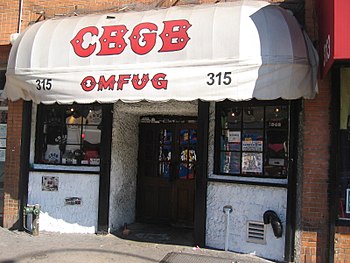Soundtrack in my head: Missing Persons: “Mental Hopscotch”

In my pre-teens and early teens, the word “New Wave” was thrown around a lot. I remember a radio commercial for Maxell blank cassette tapes that had this synthesized female voice saying, “New Wave was not meant to be played on a punk tape. Get Maxell tape.”
But what exactly was “New Wave?” How was it different from punk? Did it include synth-pop? Or ska? And what style of music was Eddy Grant really playing? I think the people used the term loosely without people really quite knowing what it really meant.
Maybe Pee-wee Herman below nailed it. (Note–this was pre Playhouse Pee-wee, as is obvious from the clip from Cheech and Chong’s Nice Dreams.)
New Wave was basically rock, but um, different from what we knew as rock. It was a close relative of punk. Less blues, and perhaps more angst. It arguably overlapped with ska and synth-pop. And many artists crossed in between those genres. (For the sake of this article, I’m defining “new wave” “synth-pop” and “ska” as separate genres.)
With hindsight being 20-20, I define New Wave as being similar to punk rock in being quite fast and guitar oriented and sometimes slightly off-tune. But while punk was defined by loud guitars, nihilism, anarchy, and two- or three- chords in the entire song, New Wave was more artsy, angst-ridden, twitchy, and deliberately weird, and usually not defined by distortion guitar. Punk tended to sport leather jackets, spiky hair, and safety pins, while New Wave sported the first mullets, skinny ties and strange uniforms. New Wave was not music to relax to, per se–in fact sometimes it seemed so impatient that it sounded like it was skipping chords and beats in its hurry to finish the song.
The term “New Wave” was originally by a few writers used to describe artsy rock groups in the early 1970’s such as The Velvet Underground and The New York Dolls. By the mid-70’s, the label was applied to a number of underground acts come out of the famed musical venue CBGB’s, including Blondie and Talking Heads.
Perhaps David Byrne in the above video had the angst-riddine geek-rock thing down before anyone else.
Devo‘s 1978 cover of the Rolling Stones’ “Satisfaction” turned up the angst even higher. Note the swim goggles, a guy flopping around like a fish out of water, and the “baby” sticking a fork in an electric toaster.
The Mo-dettes did another New Wave cover of the Rolling Stones, with their 1980 rendition of “Paint It Black.”
In this 1978 clip, The Rezillos turn the New Wave angst up to eleven. Note the 80’s mullet, alien glasses and pink motorcycle outfit on the male lead singer.
Finally, Missing Persons tended to be more synth-pop, but their 1980 release “Mental Hopscotch” was more guitar heavy and the title of the song perfectly describes the mood of New Wave. The Los Angeles-based band wrote some brilliantly eerie songs about fear and alienation in the early 80’s.

